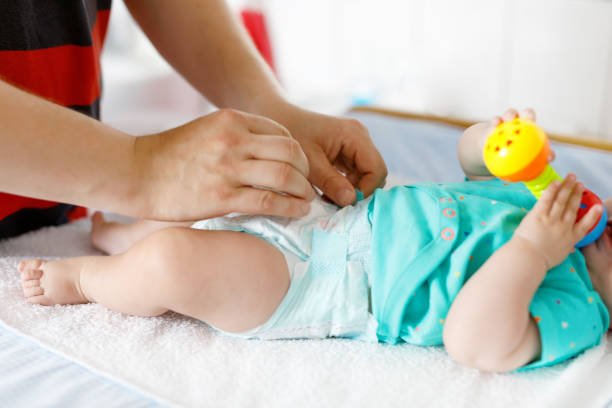
How Many Wet Diapers Should Baby Make?
As a new parent, one of the most important things you want to ensure is that your baby is getting enough milk. While it can be difficult to know for sure, there are a few simple signs you can look for to make sure your little one is properly hydrated. One of the best indicators of proper hydration is the number of wet diapers your baby is producing.
What are Wet Diapers?
Wet diapers are simply diapers that have been soiled with urine. This is an important indicator of hydration in infants, as it shows that your baby is drinking enough fluids. Wet diapers can also provide important information about your baby's health, as changes in the frequency or amount of wet diapers can indicate an underlying health issue.

How Many Wet Diapers Should My Baby Have?
The number of wet diapers your baby has each day can vary based on their age and size. However, as a general rule of thumb, you can use the following guidelines to determine if your baby is getting enough milk:
- Newborns (0-3 months): You should expect to change at least 6-8 wet diapers per day. In the first few days after birth, your baby may only have one or two wet diapers per day, but this will gradually increase as they start to drink more milk.
- Babies 3-6 months: Your baby should have at least 5-6 wet diapers per day.
- Babies 6-12 months: Your baby should have at least 4-5 wet diapers per day.
It's important to note that these are just general guidelines, and that every baby is different. Some babies may have more or fewer wet diapers than others, depending on their size, age, and overall health.
Signs of Dehydration in Babies
While wet diapers are a good indicator of proper hydration, it's also important to be aware of the signs of dehydration in babies. Dehydration can be serious, especially in young infants, and it's important to catch it early and take action.
Some common signs of dehydration in babies include:
-
Dry mouth and tongue
-
Fewer wet diapers than usual
-
Sunken fontanels (the soft spots on the top of a baby's head)
-
Dry, cool skin
-
Drowsiness or lethargy
-
Crying without tears
-
Sunken eyes
-
Dark yellow urine
If you suspect your baby may be dehydrated, it's important to seek medical attention immediately. Your pediatrician can perform a physical exam and, if necessary, run tests to determine the cause of dehydration and determine the best course of treatment.
How to Ensure Your Baby is Getting Enough Milk
The best way to ensure your baby is getting enough milk is to breastfeed or formula-feed on demand. This means offering your baby a feed whenever they show signs of hunger, such as rooting, crying, or putting their hand in their mouth. You can also use the number of wet diapers as an indicator of proper hydration, and make sure your baby is having enough wet diapers each day.
It's also important to make sure your baby is positioned correctly during feeds and that they are able to latch on properly. If you are breastfeeding, you can also try different breastfeeding positions to find the one that is most comfortable and effective for you and your baby.
Here is a picture of different Breastfeeding positions.

Therefore, it's important to monitor your baby's wet diapers and make sure they are getting enough milk to prevent dehydration. You can also talk to your pediatrician if you have any concerns or if you notice a sudden decrease in the number of wet diapers. Remember, every baby is different and may have different needs. The best way to ensure your baby is getting enough milk is to trust your instincts, observe their behavior, and respond to their cues. With the right support and attention, you'll have a healthy, happy, and hydrated baby in no time.

